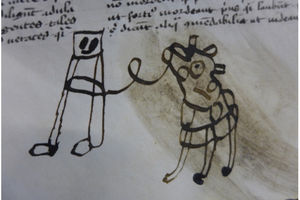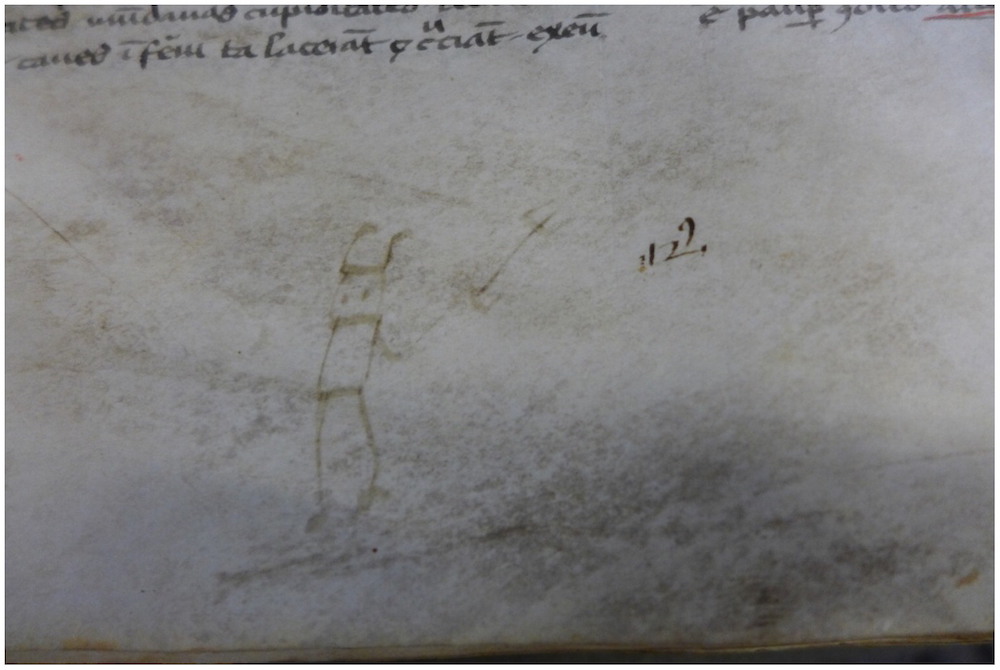An interesting discovery was found within a convent in Naples, Italy. Within the margins of a medieval manuscript, researchers found what appear to be doodles that were drawn by a child. The doodles appear to be a farm animal, a person, and the devil. Experts believe that these drawings were done by a child.

Photo: Live Science
It’s no surprise that children love to doodle, so why would the 14th century be any different. These drawings were found within a 14th century manuscript, however, experts believe that the drawings were done a few hundred years after the books manuscripts publication. As insignificant as this discovery may seem, it’s quite fascinating to see something that is completely out of the ordinary for historical discoveries. Deborah Thorpe, the author of this study, states that these drawings are quite serendipitous. Thorpe came across these wonderful drawings while doing research on another project.
Thorpe states that, “I was looking through a database of medieval manuscripts online, and I found images of these beautiful doodles in the margins, and to me they looked like they were done by children. I thought ‘This is really interesting, has anyone written anything about this?”
These aren’t the first drawings to be found within the margins of medieval documents. Historians have found images such as tumbling animals and sometimes more obscene images like defecting monks between the pages of historical documents. Other images that portray an “unsophisticated, child-like quality” have been found as well. And of course, experts believe these drawings were done out of pure boredom. Despite their “child-like” quality, Thorpe believes these drawings were actually done by an adult. In order to figure out whether or not an adult drew these doodles, Thorpe reached out to a child psychologist for assistance.

Photo: Live Science
The three sepearte doodles include two figures, one that looks like a devil and one that looks like a person standing next to a cow or a horse. After an examination, the psychologists determined that there were several clues that pointed to these drawings being created by children between the ages of 4 and 6. Thorpe states that, “The psychologists came up with a set of criteria for why we could say they were the work of children, for example, the elongated shapes, the really long legs and the lack of torso, the focus on the head. These are the things that are most important to children. If you compare them with the doodles that children make today, they are really similar. It was just a case of detective work, really.”
After her thorough investigation, this discovery will mark the first time that a set of children’s drawings have been found within a medieval manuscript. Deborah Thorpe’s study can be found in the journal Cogent Arts and Humanities.

